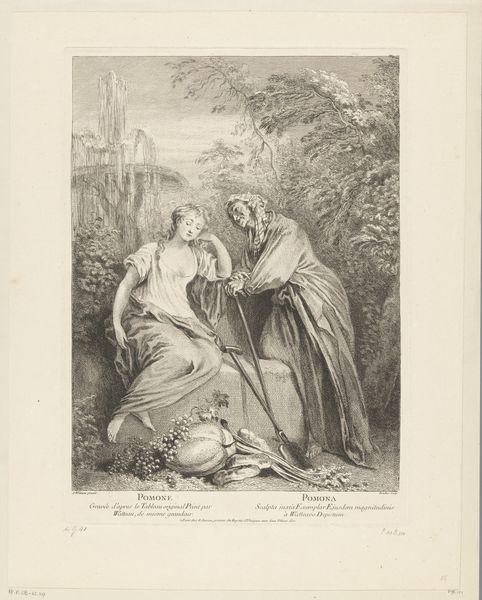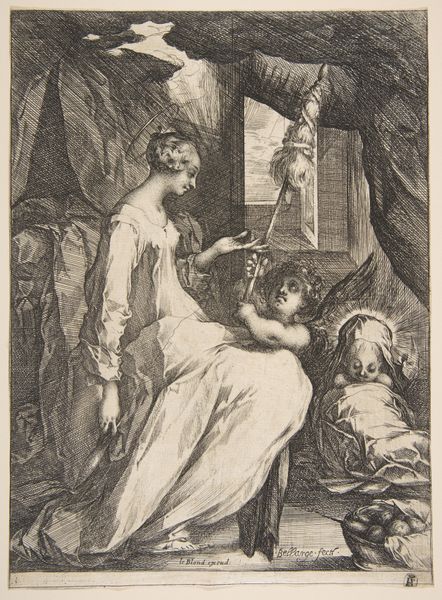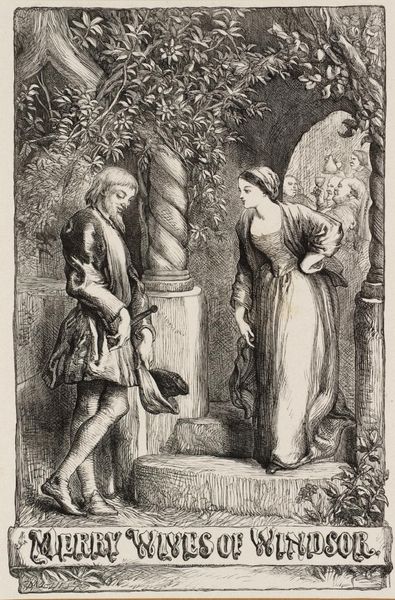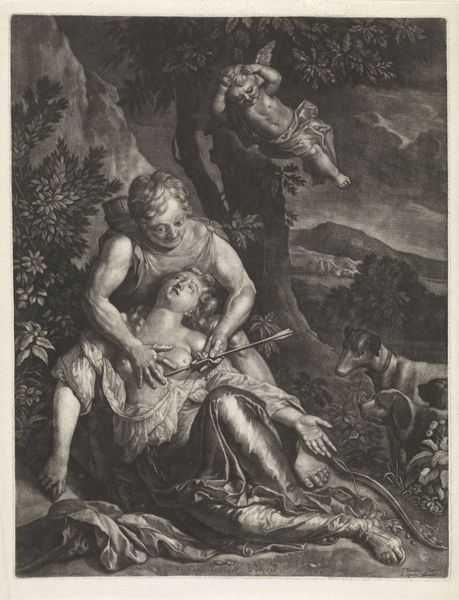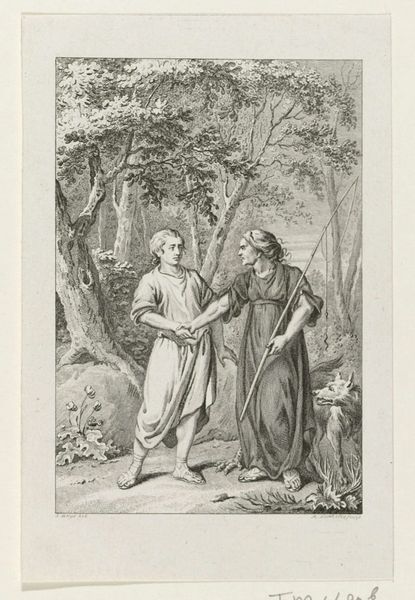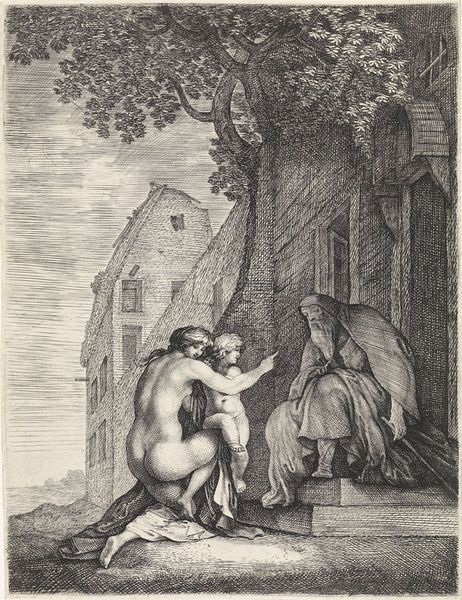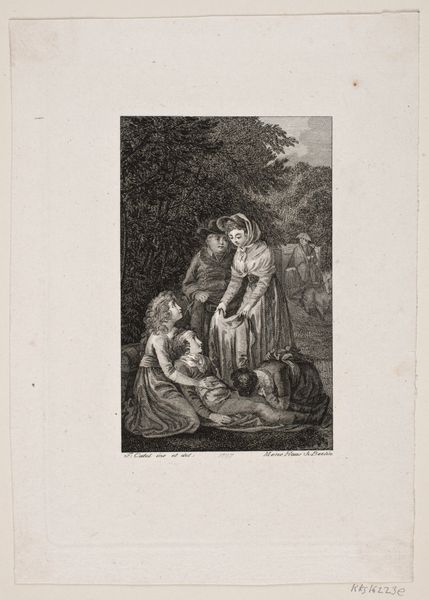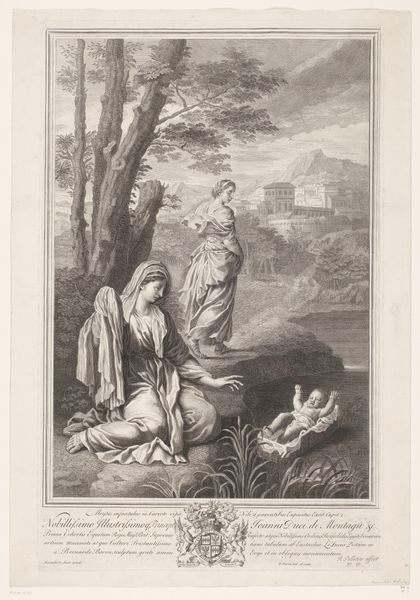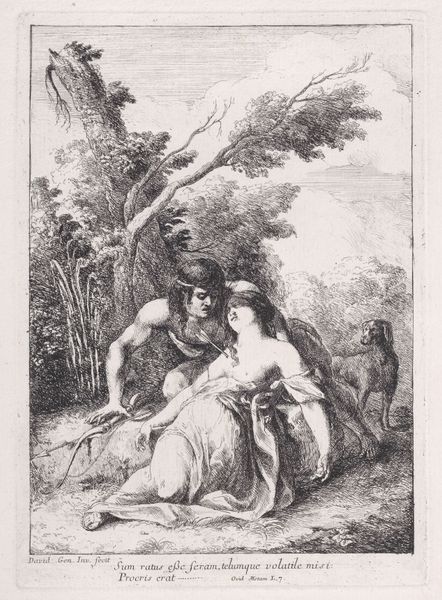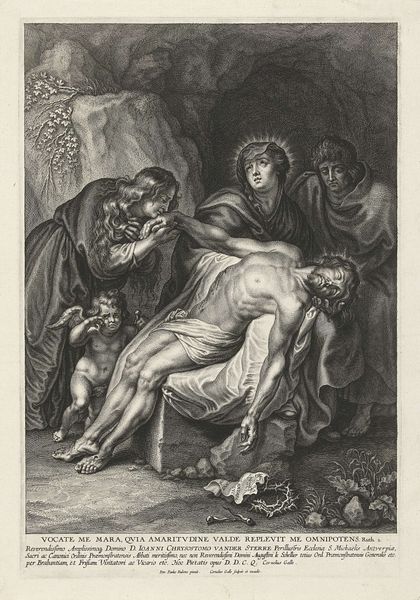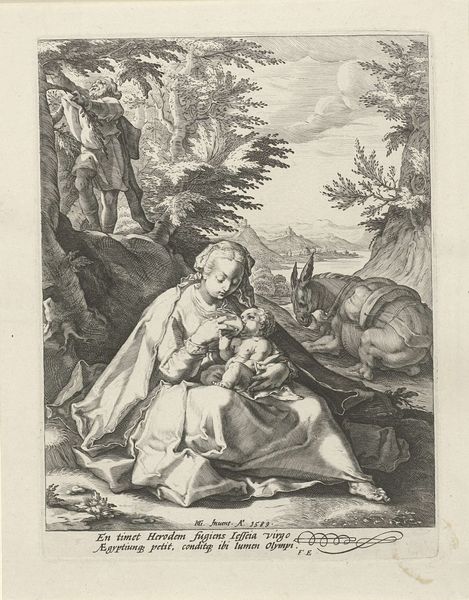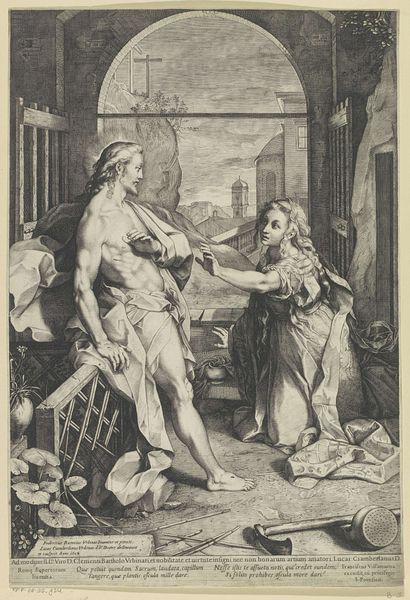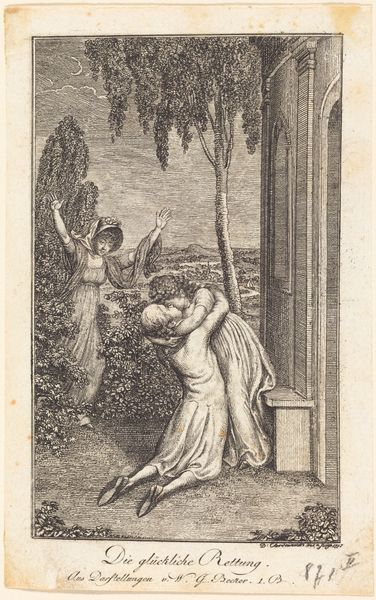
Dimensions: sheet: 62.5 Ã 46.5 cm (24 5/8 Ã 18 5/16 in.) plate: 43.6 Ã 31.7 cm (17 3/16 Ã 12 1/2 in.)
Copyright: CC0 1.0
Editor: This is "Pomona" by François Boucher. It looks like an engraving. I’m struck by the contrast between the youthful figure and the older woman, and the abundance of fruit. How do you interpret this work? Curator: I see here a commentary on labor and its transformation into consumable goods. Notice the tools present: the shovel, the fruit, and even the women themselves represent different stages of production. How does the artist depict the act of labor and the subsequent yield? Editor: So, you're saying the image isn't just about mythology, but also about how things are made and consumed? Curator: Precisely. The print translates a painting – a luxury object – into something more widely accessible through reproductive printmaking. Considering its availability, who has access to this image, and what does that say about 18th century French society? Editor: I never thought about it that way, that the act of making the print itself reflects material concerns! Thanks for opening my eyes. Curator: My pleasure. It is important to think about the implications of material availability and consumption and how this reflects a class structure.
Comments
No comments
Be the first to comment and join the conversation on the ultimate creative platform.
